 As discussed in the article on medicine, pharmaceuticals form a major part of the Pocali economy.
As discussed in the article on medicine, pharmaceuticals form a major part of the Pocali economy.
Medicinals are generally available in two forms: prefabricated or compounded.
Prefabrication works best for widely used remedies that can be mass-produced on some level (not dependent on rare ingredients, and used for treating relatively common ailments). These will typically come in tubes, many labeled in Rovari script in addition to Pocali, particularly for medicines used by both Daraz and Humans.
The majority of medicines, though, are compounded: made to order from raw ingredients per the individual’s specific medical needs. Because several different types of raw medicinals might have the same or similar effects, and the rarity of various medicinals makes large scale consistency difficult to achieve, in many cases it’s just easier to make something on the spot based on whatever ingredients are available in the region.
An apothecarist’s egg is basically a portable mini-pharmacy. A typical egg will contain raw ingredients, tinctures, extracts, and tools for mixing medicines or forming tablets.

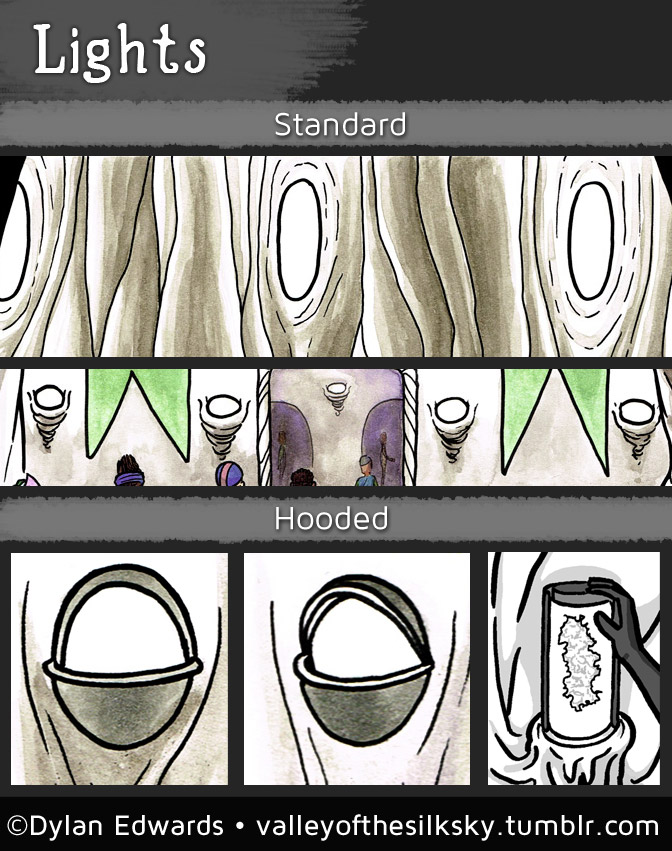 Pocalo doesn’t have electric lighting (or electric anything, for that matter).
Pocalo doesn’t have electric lighting (or electric anything, for that matter).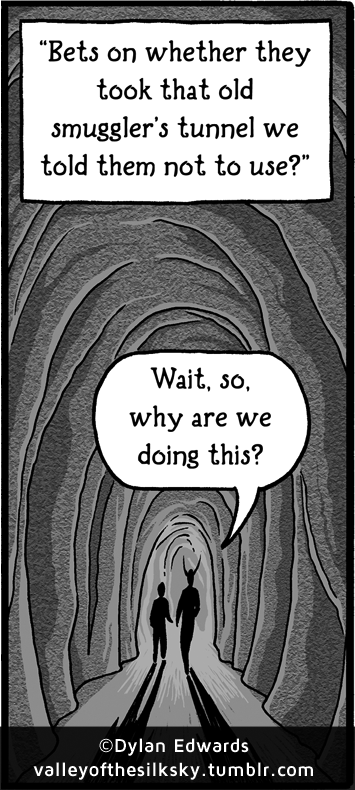 The country that occupies the Valley, Pocalo, is divided into provinces, and each province is stacked on top of the other. The massive structure that houses all these provinces was built up slowly over the course of thousands of years. For most of that time, the only way to get from one province to another was to take a long trek up or down the mountains that anchor the structure.
The country that occupies the Valley, Pocalo, is divided into provinces, and each province is stacked on top of the other. The massive structure that houses all these provinces was built up slowly over the course of thousands of years. For most of that time, the only way to get from one province to another was to take a long trek up or down the mountains that anchor the structure.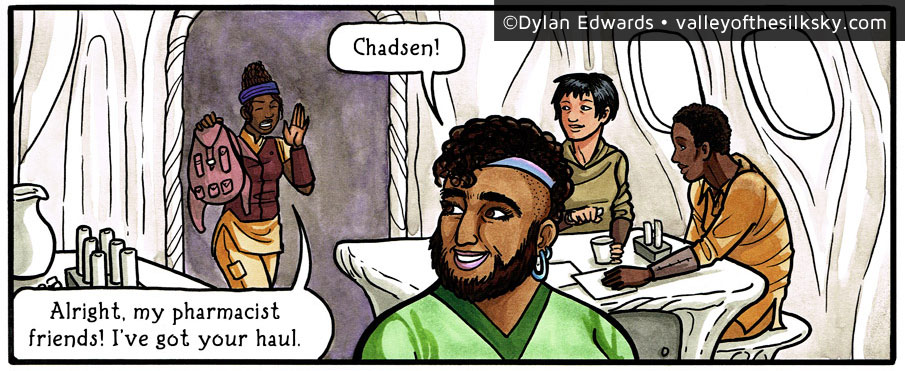
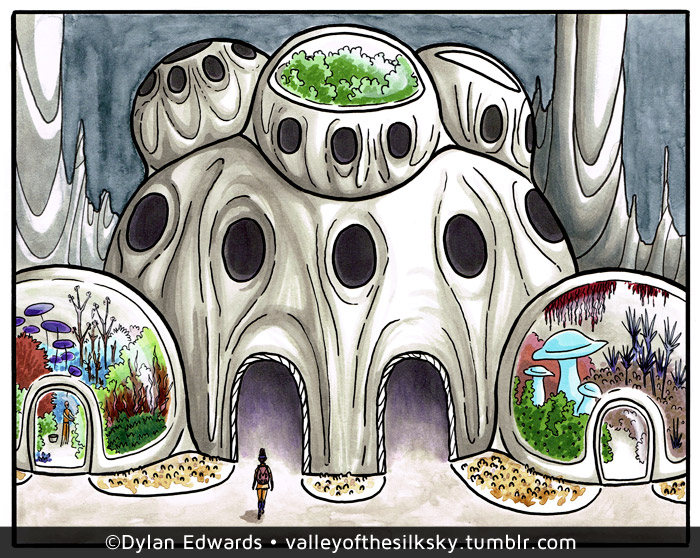 Botanists are always looking for species that can be domesticated and grown on demand to reduce production costs. Places like the Pharmaceutical Research Center in Uttara City typically have greenhouses that cultivate whatever useful species can be grown in the area. The modular nature of the building helps prevent unwanted cross-pollination of the plants being cultivated, or escape by potentially invasive species.
Botanists are always looking for species that can be domesticated and grown on demand to reduce production costs. Places like the Pharmaceutical Research Center in Uttara City typically have greenhouses that cultivate whatever useful species can be grown in the area. The modular nature of the building helps prevent unwanted cross-pollination of the plants being cultivated, or escape by potentially invasive species.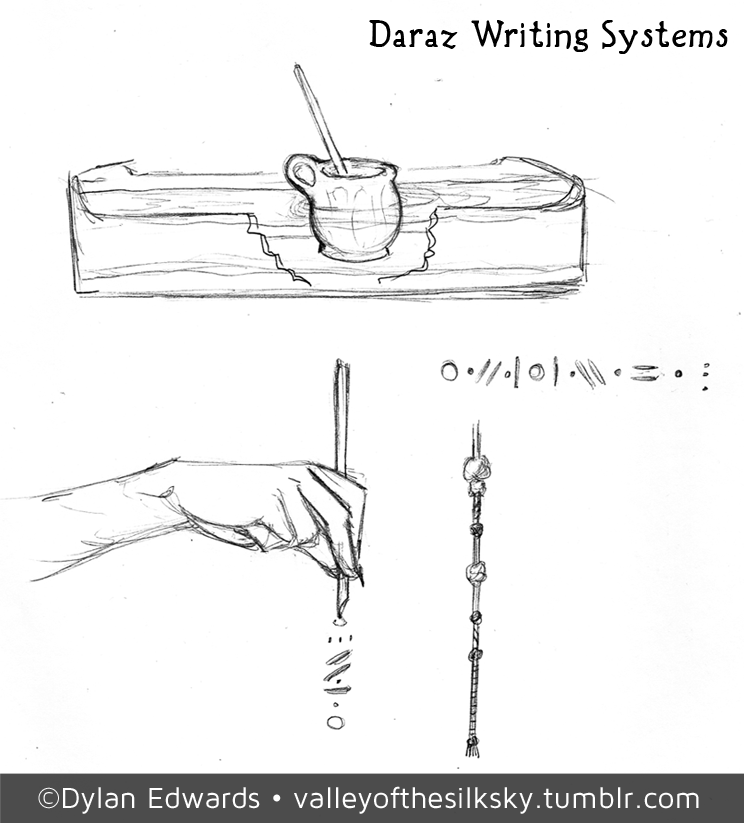
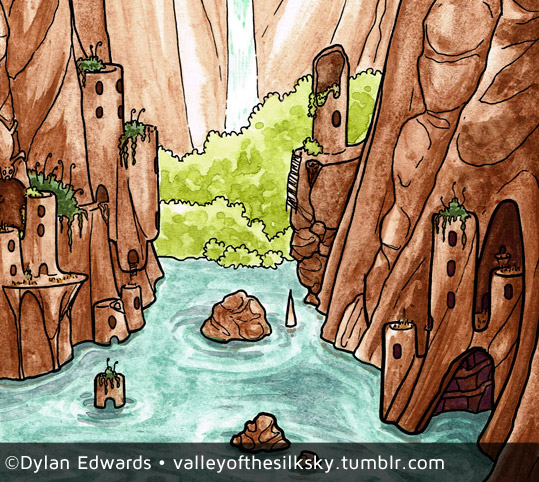 The Red Cities predate the giant web structure that houses the current provinces of Pocalo, but the people of the Red Cities were the ones who developed the technology to use cloud spider silk as a building material.
The Red Cities predate the giant web structure that houses the current provinces of Pocalo, but the people of the Red Cities were the ones who developed the technology to use cloud spider silk as a building material.